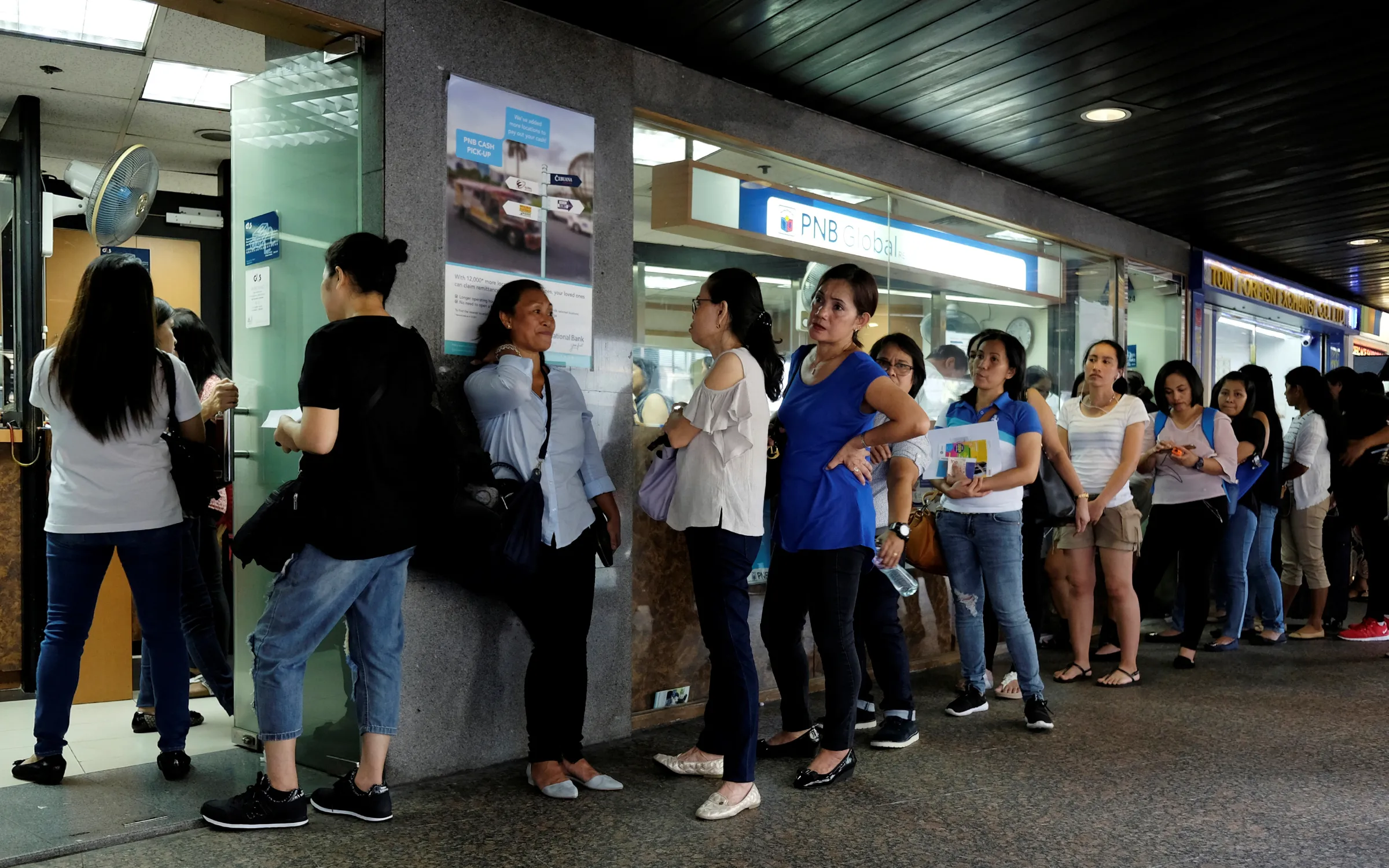We must ask ourselves: are we doing enough to harness remittances’ power to finance development?
Remittances can transform lives: Let's put them to work
Opinion

Opinion
Domestic helpers line up for remittance services at the financial Central district in Hong Kong, China September 2, 2018. REUTERS/Bobby Yip
Remittances from migrant workers are expressions of solidarity and investments in the future. We must harness their power.
Álvaro Lario is President of the International Fund for Agricultural Development (IFAD), and José Manuel Albares Bueno is Spain’s Minister of Foreign Affairs, European Union and Cooperation.
Migration is not new, nor often even a choice.
For millions of people today, the decision to leave home has become a necessity – a legitimate response to economic crisis, armed conflict or increasingly frequent and intense climate disasters. Or, as is too often the case, a combination of all these factors.
The presence of migrant workers is often a hot topic of discussion in their adopted countries. But these workers are also a quiet and powerful force reshaping the societies they left behind.
In 2024, over 200 million migrant workers from low- and middle-income countries sent a staggering $685 billion in remittances to approximately 800 million family members in their countries of origin.
This amount surpasses the combined total of official development assistance (ODA) and foreign direct investment (FDI) to developing countries.
Nearly one-third of remittances reach rural areas, providing a reliable financial lifeline, supporting local economies and family welfare, particularly in times of crisis. Remittances are more than money: they are expressions of solidarity and investments in the future.
So we must ask ourselves: are we doing enough to harness remittances’ power to finance development – especially at a time of shrinking international development budgets?
Vital lifelines
Despite their immense value, remittance flows face growing challenges, from new proposed taxes to regulatory hurdles, to the over-zealousness of commercial banks in policing international flows. While often well-meaning, such measures can make it harder and costlier for migrants to support their families.
Remittances are vital lifelines and the final line of defence in the wake of dwindling development resources.
And they are put to good use – research from the International Fund for Agricultural Development (IFAD) shows that families receiving an average of $300 per month invest in small businesses, home improvements, and climate-smart farming that help them adapt. This represents investment in the areas that will help whole societies develop. They must be protected.
The evidence is clear: migrant families are doing what public institutions can’t as they deal with tight fiscal space and high debt burdens.
In 30 countries, remittance flows represent more than 10% of gross domestic product and are a vital source of external capital in 46 more.
For this reason, rather than treating remittances as a private affair, governments should see them as public assets (in disguise) boosting education, climate resilience and entrepreneurship.
Governments and development partners can help protect and grow remittance flows by fostering access to affordable, diversified financial services. Policies that lower transaction costs, promote competition among providers, and encourage innovation will be key.
Digitalization alone can potentially save up to $18 billion each year, ensuring more money reaches those who need it most.
With the support of Spain and other international partners, IFAD helps transform remittances into lasting development gains.
For example, in the Philippines, IFAD worked with cooperatives to give remittance receivers financial advice and options, especially around savings and investments that supported local farmers, fisherfolk, and rural entrepreneurs.
In Nepal, migrants and returnees received financial literacy and entrepreneurship training, in West Africa, IFAD partnered with banks to offer remittance-linked savings products, and in East Africa, we funded pilot schemes that linked remittances to microinsurance that protected small-scale food producers and rural communities against economic and climate risks.
These initiatives show that with the right investment and policy support, remittances can help build climate adaptation, empower communities, and offer rural families the option to stay and thrive at home on the land.
Governments, financial institutions, and international organisations should fully harness the transformative power of remittances. This means ensuring the right tools, policies, and partnerships to ensure migrant contributions are protected and multiplied, ensuring that those left at home do not have to leave in their turn.
These financial flows are not just a safety net, but a springboard to prosperity, resilience, and sustainable development. They are proof of the resilience and generosity of migrants, and one of the best ways to get money in the pockets of the world’s most vulnerable. Let’s put remittances to work.
Any views expressed in this opinion piece are those of the author and not of Context or the Thomson Reuters Foundation.
Tags
- Finance
- Unemployment
- Wealth inequality
- Poverty
- Cost of living
- Migration
- Workers' rights
- Economic inclusion
Go Deeper
Related
Latest on Context
- 1
- 2
- 3
- 4
- 5
- 6


















